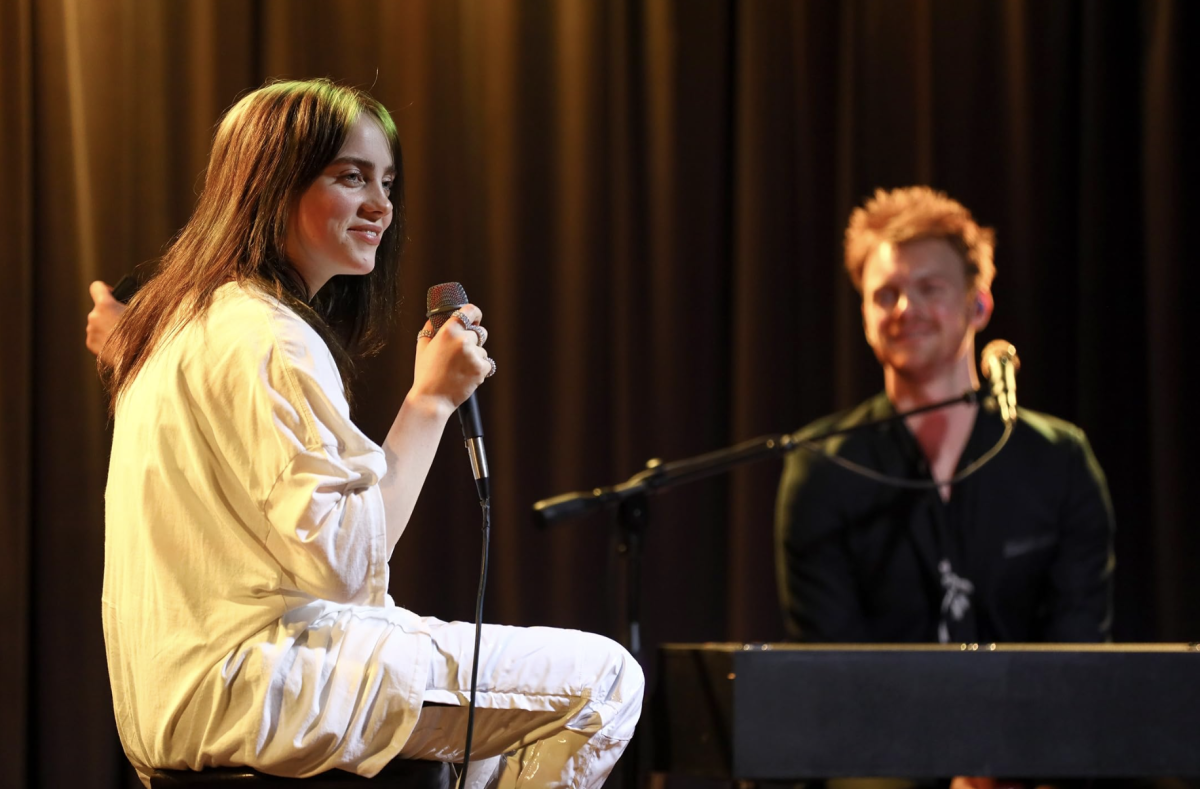
The ins and outs of The Beatles’ legendary self-titled 1968 album – the multiple versions of “Revolution,” Eric Clapton’s lead guitar cameo, the microphone on Paul McCartney’s shoes during “Blackbird” and the inspiration they got from their retreat in India – were discussed Wednesday in the Student Union Ballroom.
Visiting guest lecturer Scott Freiman, who tours the country giving lectures on The Beatles, took audience members on a journey with the band during their production of the album commonly referred to as the White Album. Freiman provided historical context and played video, as well as audio clips of unused takes and demo recordings.
“I first heard the ‘White Album’ when I was young and it scared me to death,” said Freiman, who called the album a “rollercoaster ride through so many styles of music. [It was] an extraordinary work of art made during a time of tremendous tension in the Beatles’ camp … I always wanted to get under the covers and look at it.”
In 1967, The Beatles were thriving, coming off the enormous success of “Sgt. Pepper’s Lonely Hearts Club Band,” an album Rolling Stone Magazine calls the greatest of all time. But the death of band manager Brian Epstein in August of that year left the band without their financial advisor and friend, said Freiman.
Epstein was a “father figure for The Beatles … They didn’t know what to do,” Freiman said. “The friction of the White Album was trying to figure that out.”
During a trip to India on a retreat with Maharishi Mahesh Yogi, band members spent time writing alone and learned techniques from other musicians such as Donovan and The Beach Boys’ Mike Love, said Freiman. Also on their minds was the direction they wanted to take the next album in. Freiman attributed Bob Dylan’s “John Wesley Harding” album – a record in stark contrast with the psychedelic music of the time – as having an effect on The Beatles.
“Dylan was doing outlandish stuff and then pulled it back,” said Freiman. “They worshipped Dylan … They made an agreement that their next album would not contain studio trickery.”
Throughout the lecture, Freiman played initially unreleased takes from the album’s recording sessions as well as from the Kinfauns demo sessions, recorded at George Harrison’s house in Esher, U.K.
In some instances, these initial recordings contrast greatly with the final songs. The second of multiple takes of “Helter Skelter” was a slow, bluesy song. The first take of “While My Guitar Gently Weeps” was once a much sparer tune consisting of only Harrison and his acoustic guitar.
The most unique feature of Freiman’s lecture was when he would play a song in its entirety, isolating and highlighting specific tracks along the way, such as McCartney’s singing of the bass part in “I Will,” or Clapton’s cameo appearance and famous guitar solo in “While My Guitar Gently Weeps.”
He also explored the tension between band members. Yoko Ono’s self-inclusion in the “sacred recording space” caused friction between John Lennon and the other Beatles, he said. Ringo Starr, feeling underappreciated, quit the band for a brief period of time, which led McCartney to play drums on the recordings of “Back in the U.S.S.R.” and “Dear Prudence.”
For those curious about why there were so many different versions of “Revolution,” Freiman had an answer for that too. Lennon had wanted to release the song as a single, but after the first three minutes, the song took an unexpected turn when Ono began chanting spoken words into the microphone.
The band decided to have two versions of the song on the album – “Revolution #1” would be the song Lennon wrote and “Revolution #9” would be a mix of spoken words, sound effects and overdubs from other songs.
They then decided to record a faster-paced version for the single “Revolution,” plugging their guitars directly into the console, said Freiman. Finally, a fourth version of the song was unofficially made when the band recorded the promotional video and mixed the harmonies from “Revolution #1” into the single.
Freiman also played inspirations for several of the songs off the album, including Johann Sebastian Bach’s “Bourrée in E Minor,” which influenced McCartney’s “Blackbird.” Chuck Berry’s “Back in the U.S.A.” led to the creation of “Back in the U.S.S.R.”
Wednesday’s lecture was sponsored by WMUA 91.1-FM. In addition to the lecture he gave at UMass, Freiman also gives lectures on the song “Strawberry Fields Forever” and the “Sgt. Pepper’s Lonely Heart Clubs Band” album. Freiman – a graduate of the masters of music composition program at New York University – said he began the lecture series two years ago in his living room for his friends and composers. He’s delivered 20 lectures this year, and said he has 20 more scheduled for the first two months next year.
Chris Shores can be reached at [email protected].







adam white • Nov 4, 2011 at 9:19 am
No mention of how they kicked Clarence Walker out of the band and stole all his good ideas?